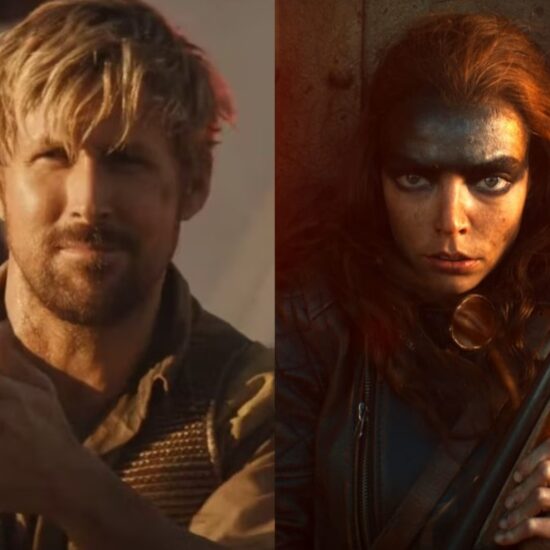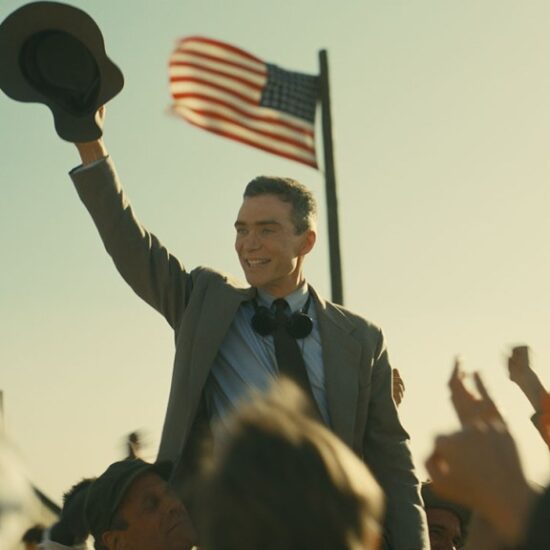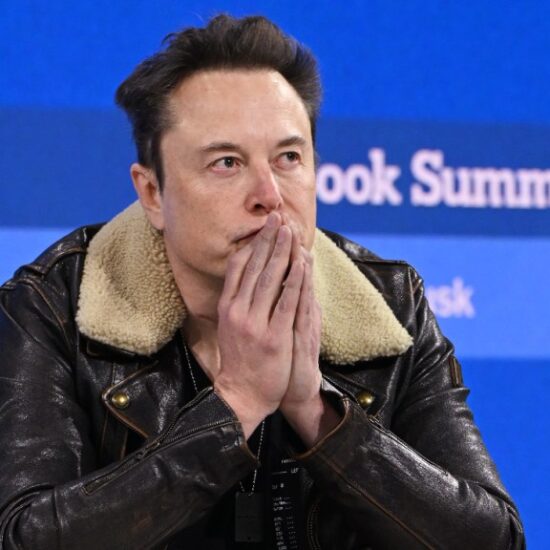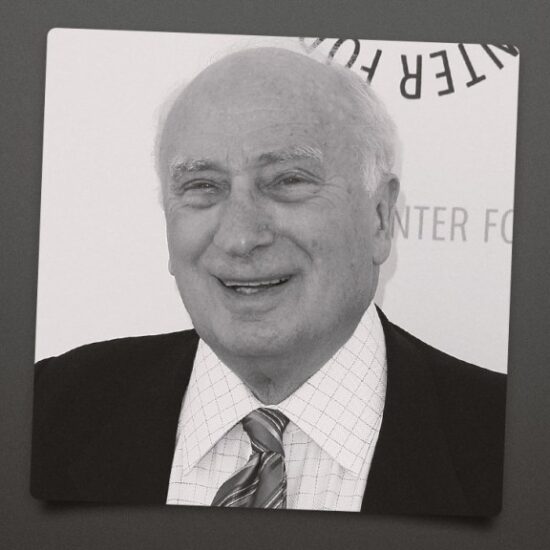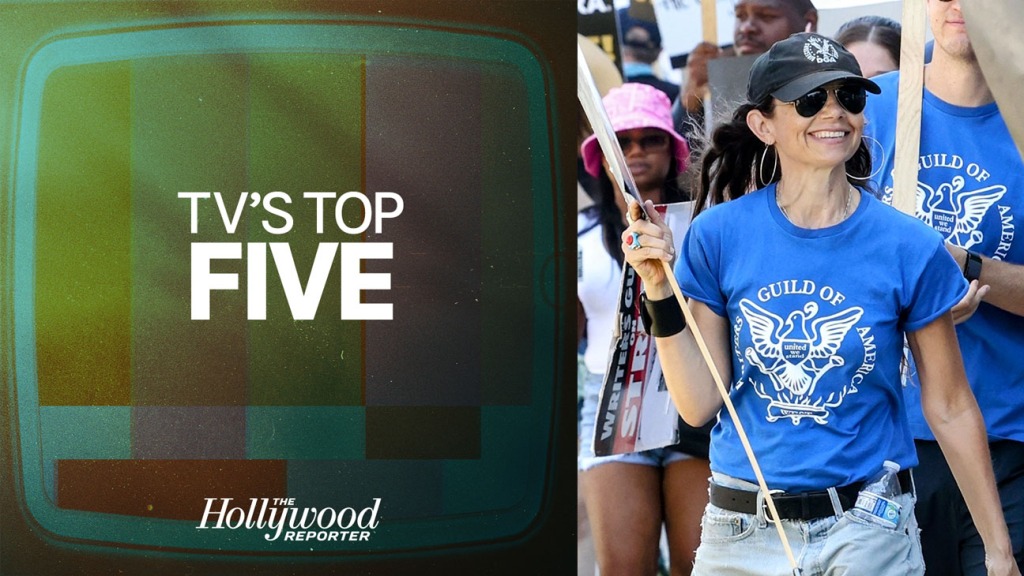
Welcome to the 223rd episode of TV’s Top 5, The Hollywood Reporter’s TV podcast.
Every week, hosts Lesley Goldberg (West Coast TV editor) and Daniel Fienberg (chief TV critic) break down the latest TV news with context from the business and critical sides, welcome showrunners, executives and other guests, and provide a critical guide of what to watch (or skip, as the case may be).
This week, we’re joined by Justine Bateman, the writer, director and producer who most recently served as a consultant on the use of artificial intelligence for SAG-AFTRA’s negotiating committee. Bateman, who rose to stardom with her twice-Emmy nominated role as Mallory Keaton on Family Ties, has a degree in computer science from UCLA and is also a member of the Writers Guild, SAG-AFTRA as well as the Directors Guild. She previously served on SAG’s national board of directors and joins us this week to discuss the AMPTP’s startling response to generative AI.
Other topics discussed in this episode include the future of HBO’s The Idol, why prestige comedies often end after three seasons, Netflix earnings as well as NBC and CBS’ rebooted fall schedules. As usual, the episode ends with Critic’s Corner that this week features Dan’s reviews of Minx, Special Ops: Lioness, Praise Petey and Command Z.
But first, read on for an edited and condensed portion of our interview with Bateman.
You were on the national board of directors for SAG and resigned in 2009 over a contract that you felt didn’t properly acknowledge the shift from old media to new and didn’t honor the guild’s less visible members. How many of the seeds of your frustration from back then do you see as being at the heart of where we are today?
I was working in digital media as a writer and producer. Not many people were convinced that online — back then it was called made for new media and is now called streaming — but 90 percent of the business was not convinced that was going to be just a new place to distribute stuff. I was already working in it and I implored the negotiating committee: “We’ve got to get real estate.” And the AMPTP was saying, “Hey, don’t put any restrictions on this; work with us. We don’t know where this is going. We don’t know if we’ll be able to make any money at this at all.” I was hoping that the membership would reject it and recognize it as not being enough. They approved it so overwhelmingly that I thought, “What exactly am I fighting for?” The difference between then and now is people are listening to me and others who are saying that AI is the end of the road. If you give away your consent and compensation, if you want to participate in it — I personally as a filmmaker have no interest in it whatsoever — but if you don’t put that as the default for writers and actors in particular, you’ve just given them the keys to the whole house. If they can use 100 years of active performances to train their generative AI models and create their little Frankenstein characters or “actors” you’re over. There’s a lot of other elements — corporate greed is just out of control — but that’s the big difference between then and now.
You’ve been a vocal and fairly absolutist critic of AI, both its encroachment in art, but also into more wider reaching society at large. Was this a fascination of yours before you went back to school and got your computer science degree?
Generative AI can only function if you feed it a bunch of material. In the film business, it constitutes our past work. Otherwise, it’s just an empty blender and it can’t do anything on its own. That’s what we were looking at the time [at UCLA]. Machine learning and generative AI have exploded since then. So, this aspect of it was not a fascination of mine. But when I could see that it was going to be used to widen profit margins, in white-collar jobs and more generally replace human expression with our past human expression, I just went, “This is an end of the progression of society if we just stayed here.” If you keep recycling what we’ve got from the past, nothing new will ever be generated. If generative AI started in the beginning of the 20th century, we would never have had jazz, rock ’n’ roll, film noir. That’s what it stops. There are some useful applications to it — I don’t know of that many —but pulling it into the arts is absolutely the wrong direction.
Do you remember the exact moment where you had that epiphany because it’s the kind of thing where you hear AI and the initial reaction is always, “That sounds cool,” and then it shifts into “That sounds scary.”
A friend of mine is a video artist and he did all those violent cut scenes in my film Violet that I have in the beginning credits and are interspersed through it. He was posting all this AI-generated animation in January or February. I asked him how much of it he was actually drawing. His answer was none of it. For a very long time, I have been dismayed at the amount of content. I’ve heard from showrunners who are given notes from the streamers that “This isn’t second screen enough.” Meaning, the viewer’s primary screen is their phone and the laptop and they don’t want anything on your show to distract them from their primary screen because if they get distracted, they might look up, be confused, and go turn it off. I heard somebody use this term before: they want a “visual mosaic.” When showrunners are getting notes like that, are they able to do their best work? No. And when these companies control the entire pipeline from beginning to end, then you wind up doing what they ask. So I thought, “When is tech not going to be center stage?” When I saw my friend’s animation, I got how content is going to end. AI is going to automate content. [It can] customize the project according to years of your viewing history.
AI didn’t start out as a central issue within the WGA or SAG-AFTRA, but has obviously become one very rapidly. As someone who’s been so involved with the guild negotiations around the subject, what does the AMPTP’s response to both the performers and the writers on the use of AI signal to you?
I was on the board and the negotiating committee with SAG in 2007-08 and SAG asked me to come be an AI consultant on these negotiations. I have been in those rooms for this round, too. I told you the response that the AMPTP had about getting real estate made for new media back in 2007-08 and their response was, “Work with us. We don’t know if there’s any money in this.” When I saw the response to the AI asks from the WGA [this year] was “We’re not talking about that,” my reaction was that they were already doing it and this is already so far along. Then their asks of SAG-AFTRA — as far as what Duncan Crabtree-Ireland has revealed — that they wanted to be able to take background actors, scan them once, pay them a day’s rate, and then use their image for the rest of their lives. I feel a particular responsibility to past actors’ work. Everything that’s in the Minimum Basic Agreements of these unions were fought for by those people in the past. It’s our responsibility now that technology exists to protect their work. It’s not our place to say, “Sure, go ahead, feed in all of Charlie Chaplin’s work, all of Alfred Hitchcock’s work. Just go ahead and then you can just order up that you want somebody who moves like Charlie Chaplin, looks like Alec Baldwin and has a Spanish accent. When I see that, everything I’m saying is going to happen is exactly what they’re wanting to have happen.
Editor’s Note: The AMPTP has refuted Crabtree-Ireland’s claim, saying in a statement that the “digital replicas of background actors may be used in perpetuity with no consent or compensation is false” and that the studios and streamers’ current proposal would “permit a company to use the digital replica of a background actor in the motion picture for which the background actor is employed,” with “[a]ny other use requires the background actor’s consent and bargaining for the use, subject to a minimum payment.”
In the conversations you’ve had with the AMPTP and with people who aren’t in the industry, do you feel like they understand the way that this would impact that lower segment of the acting population or that they’re actually kind of willfully trying to eliminate it?
I think they get it. Don’t forget, AI isn’t doing this to us. People using AI to eliminate jobs, that’s who’s doing this in every sector. People really understand that concept because it’s happening in their worlds, too. … The idea that you want to [use AI to] make things easy for us? Go solve the homeless problem. Go use generative AI to clean the ocean. So, is generative AI coming in the entertainment business to make better films? No. It’s to more cheaply regurgitate the past. And frankly, audiences have been conditioned for this; look at all the sequels, reboots and remakes.
Mark Ruffalo made the point that this was a good argument to consider looking more to the indie world, to get out from under the sway of the studio’s companies that are so much a part of what the AMPTP is. You amplified that and echoed that. And that’s where you’ve done a lot of your work. Your feature was not a studio feature. Where does it leave the business? And is it your business to worry about where that leaves the David Zaslavs and Bob Igers of the world?
I wish we had the Paramount Decrees in a more substantial way where the Department of Justice said to the studios that they owned the entire pipeline: you make it, you are the exhibitors, you have the cinemas, and there’s no competition possible here. So, they made them choose. You want to own cinemas or do you want to do the work? Fin-syn rules were the same thing that we had for TV. The FCC said you can’t own the whole pipeline and could either make the show or have a network, which do you want to do? And when the fin-syn rules went away in 1993, you had NBC making an NBC show and then putting the reruns on Bravo, which NBC owns.
Right, it opened the doors for networks to vertically integrate with their own studios and make and own and distribute all of their own content, which has been mirrored by streaming services.
The FTC had open comments this morning and we all spoke [and asked them to] please come back in. This is your raison d’etre. Come on in and break these companies up. We’re negotiating against not just the biggest companies in our business, but the biggest companies in the world and arguably in all of history.
You’re running for the WGA West board —
Because I’m on the DGA Western Council, I found out that it is their rules that you can’t be on two boards. So maybe the next go around. I like being on the DGA Western Council. Maybe I’ll wind up on the DGA board. I don’t know.
There was a point earlier this summer where it looked like Hollywood’s three big unions, the writers, directors and actors, could all go out on strike at the same time. That didn’t happen as the DGA took a deal with the AMPTP. Do you think that there was a missed opportunity there by the DGA?
I think they negotiated for what they feel covers their members. I’m not mad at them for that. If you have minimum staffing requirements already in your MBA, and then on top of it, you say none of those minimum staffing requirements can be fulfilled by anything but a human, I think in their minds, that covered keeping their members. What I would have liked to see, and maybe this can be done legislatively and/or done with any restrictions that SAG gets, is this what I said earlier about restricting the ability for the AMPTP to just feed in all these past directors’ work. I don’t think that is our place to allow. I think we need to block that. I would have liked to have had that in the DGA agreement. But like I said, if you have that in SAG agreement, it takes care of it for the directors because if you can’t get all those actors that you want to feed in to sign off, you can’t feed the whole film in.
How did you vote on the DGA deal?
I voted against it because I was hoping for those kinds of protections. But that wasn’t what the majority of the membership was seeking. I feel a personal responsibility to protect past directors’ work and I will look to find other ways to accomplish that.
The WGA, SAG-AFTRA and DGA are all in an election year and there is also this pressure for solidarity. What have you learned about what the challenges are of that and how has that impacted the conversations that you’re having with people out on the picket line?
You have leverage in a negotiation if they need you. I do believe this is the last time any guild on its own will have any leverage. I believe in three years when our contracts are up again, I don’t think any one union is going to have any leverage at all. In three years, we need to negotiate together in order to have any leverage. In fact, I’m hoping even the IATSE and Teamsters can somehow get on our election cycle so that all five of us can say, “If you still want to do real human filmmaking, you have to step up and give each of these guilds what they need.”
Right, IATSE and the Teamsters’ deals are up next year.
The WGA has different needs for its members than the DGA and SAG. There are some overlaps, but I think in three years, [the AMPTP will] just go, “We’re not really sure we need to meet with you guys. We’re not really sure we need to be signatories anymore.” It depends on what they get. I’d like to know if the legal departments from any of the streamers or the studios have gone to any of these large generative AI companies and asked to see a list of what films have been fed in. Have they gone to them and said, “I want to see if any of our films are on there and if so, you’re going to delete this entire training set.” Because you can’t unwind something like that. But my hunch is that they’re not. The studios are the same companies that would get the FBI to descend on your house and get you arrested for illegally downloading one of their films. It’s the most massive copyright violation in the history of the U.S. These same companies are now hoping that feeding in 100 years of filmmaking and series into generative AI models spins wildly out of control by third parties so they can continue to come to the guilds as they have been and saying, “But everyone else is doing it, you gotta let us do it.” Why else would you just let these companies do whatever they want with all of your copyrighted material? The studios have lost hold of what their competitive advantage was. And that was their relationships with all of us — access to the directors, to the writers, to the actors — and they started chasing that Netflix model and they’ve lost billions of dollars doing that. And now they have it in their minds that they can chase the generative AI tech companies. The spread between what they understand in their jobs and what those companies understand within their jobs, it’s a million miles of space in between those two things. If they start chasing that model, thinking they can compete with that, just light the whole place up on fire because you’ll never win against those companies. They should entrench on their competitive advantage and hopefully it’s not lost completely. And go and get anything that’s copyrighted. You can’t pull it off the models, just get the models deleted if your work’s in there. The fact they haven’t done that indicates that they think they can compete with them and it’s almost comical.
For much more from Bateman, listen to the whole interview on this week’s TV’s Top 5 podcast.
Be sure to subscribe to TV’s Top 5 to never miss an episode. (Reviews welcome!) You can also email us with any topics or Mailbag questions you’d like addressed in future episodes at TVsTop5@THR.com.








